
Sabre Wulf is an action-adventure game released by British video game developer Ultimate Play the Game for the ZX Spectrum home computer in 1984. The player navigates the pith-helmeted Sabreman through a 2D jungle maze while collecting amulet pieces to bypass the guardian at its exit. The player does not receive explicit guidance on how to play and is left to decipher the game's objectives through trial and error. Sabreman moves between the maze's 256 connected screens by touching the border where one screen ends and another begins. Each screen is filled with colourful flora, enemies that spawn at random, and occasional collectibles.
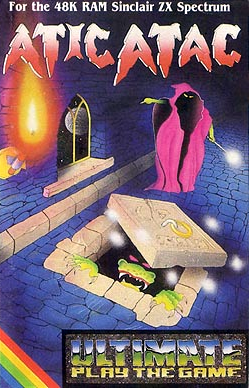
Atic Atac is an arcade-adventure video game developed and published by Ultimate Play the Game, released for the ZX Spectrum in 1983 and the BBC Micro in 1985. The game takes place within a castle in which the player must seek out the "Golden Key of ACG" by unlocking doors and avoiding enemies. It was Ultimate's second game to require 48K of RAM; most of their previous games for the Spectrum ran on unexpanded 16K models.

Southern Belle is a train simulation video game published by Hewson Consultants in 1985. Southern Belle was unique at the time of release in that it was the first 3D steam train simulator available for home computers. The game allows the user to take over the fireman and/or driver duties on a King Arthur class passenger steam locomotive on the London to Brighton line.
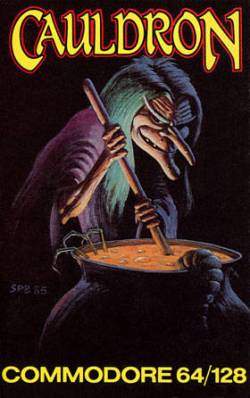
Cauldron is a video game developed and published by British developer Palace Software in 1985 for the ZX Spectrum, Commodore 64, and Amstrad CPC home computers. It contains both platform game and horizontally scrolling shooter sections. Players control a witch who aims to become the "Witch Queen" by defeating an enemy called the "Pumpking".
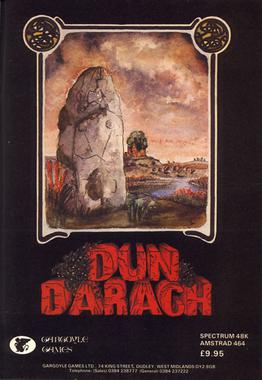
Dun Darach is an arcade adventure developed and published in 1985 by Gargoyle Games for the ZX Spectrum and Amstrad CPC computers. It is a prequel to the 1984 game Tir Na Nog. The plot has Celtic hero Cuchulainn on a search to find his companion Lóeg in the mysterious city of Dun Darach. Inspiration for the game came from the works of Fritz Leiber and Michael Moorcock.

Universal Hero is an action-adventure game released by Mastertronic in 1986 for the ZX Spectrum and in 1987 for the Atari 8-bit family. The Spectrum version was developed by Stuart Middleton working under the name of Xcel Software. The Atari 8-bit port was commissioned by Mastertronic from a third-party developer.

Wonder Boy is a 1986 platform game published by Sega and developed by Escape. Originally designed for arcades, it was later ported to the SG-1000, Mark III/Master System and Game Gear video game consoles by Sega, and to the ZX Spectrum, Commodore 64 and Amstrad CPC home computers by Activision. The game is also known as Super Wonder Boy for its Sega Mark III release in Japan and Revenge of Drancon for its Game Gear release in North America. A high definition remake of the game, titled Wonder Boy Returns, was developed by CFK and released on Steam on October 12, 2016. Wonder Boy was rereleased in 2022 as part of Wonder Boy Collection for the Nintendo Switch and PlayStation 4 which includes its versions on arcade, Master System, SG-1000 and Game Gear.

Fairlight is an isometric projection arcade adventure video game developed by Bo Jangeborg and Jack Wilkes and released in 1985 on Softek's The Edge label. Developed in seven months, Jangeborg created the "Worldmaker" graphic development system to replicate the Filmation system used by Ultimate's Knight Lore. The game used code from a graphics utility he had developed in 1983, called Grax, which had also been the foundation of graphics package The Artist, published on Softek's SofTechnics label. Jack Wilkes contributed art assets towards the game, including enemy sprites and the title screen. A sequel, Fairlight II, was released in 1986.
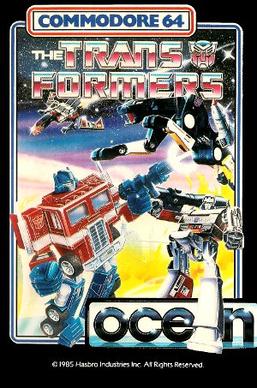
The Transformers is a platform shoot 'em up game based on the Transformers franchise. It was written by Denton Designs and released by Ocean Software for the Sinclair Spectrum and Commodore 64 home computers in 1986.

Dark Sceptre is a strategy adventure video game by Mike Singleton's design team Maelstrom Games, for Beyond Software. It was published by Firebird Software for the ZX Spectrum in 1987 and for the Amstrad CPC in 1988.
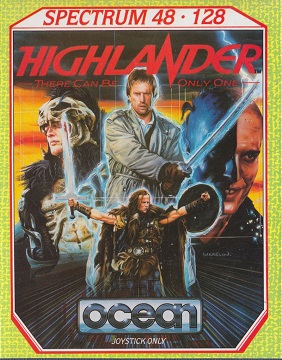
Highlander is a video game tie-in to the Highlander franchise released in 1986, the same year as the film, published by Ocean Software for the ZX Spectrum, Commodore 64 and Amstrad CPC home computers. Highlander was panned by reviewers.
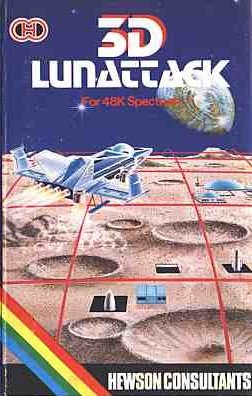
The Seiddab Trilogy is a series of video games designed by Steve Turner for the ZX Spectrum and published by Hewson Consultants. It consists of 3D Space-Wars (1983), 3D Seiddab Attack (1984), and 3D Lunattack. All three games were later published together as The Seiddab Trilogy by Hewson for the Rotronics Wafadrive. The series name is derived from the word "baddies" being spelt in reverse.

Back to the Future is a 1985 video game released by Electric Dreams Software for the ZX Spectrum, Commodore 64 and Amstrad CPC. The game is loosely based on the 1985 film of the same name.

Cosmic Guerilla is a fixed shooter arcade video game developed by Universal and released 1979. A ZX Spectrum port was published by Crystal Computing in 1983.

Thanatos is an action game developed and published by Durell Software in 1986 for the ZX Spectrum, Commodore 64 and Amstrad CPC.

Moonlight Madness is a platform game for the ZX Spectrum home computer, published in 1986 by Bubble Bus Software. The player controls a boy scout attempting to unlock a safe within a mansion to obtain pills for the mansion's owner, a mad scientist, who has collapsed. This requires the player to traverse the mansion's rooms while avoiding hazards such as dangerous house servants and fatal falls.

The Real Ghostbusters is a 1987 shoot 'em up arcade game developed and published by Data East. It is loosely based on Ghostbusters. In Japan, Data East released it as a non-Ghostbusters arcade game under the title Meikyuu Hunter G. In 1989, Activision published The Real Ghostbusters for Amiga, Amstrad CPC, Atari ST, Commodore 64, and ZX Spectrum.

Shaken but Not Stirred is a 1982 text adventure developed and published by Richard Shepherd Software, and released in the United Kingdom for the ZX Spectrum. The game is based on the fictional spy character of James Bond.
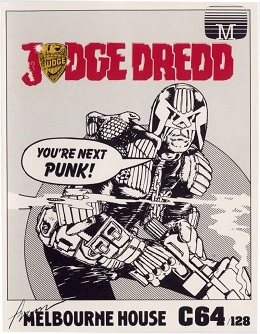
Judge Dredd is a platform shoot 'em up video game based on the character of the same name. It was developed by Beam Software and published by Melbourne House. It was released in Europe in 1986, for Commodore 64 and ZX Spectrum.
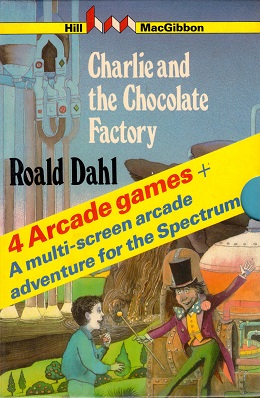
Charlie and the Chocolate Factory is a 1985 video game developed by British studio Soft Option and published by Hill MacGibbon. It was released in the United Kingdom for the ZX Spectrum. It is loosely based on Roald Dahl's 1964 book of the same name, and consumers had the option of buying the game and book as a set.




















